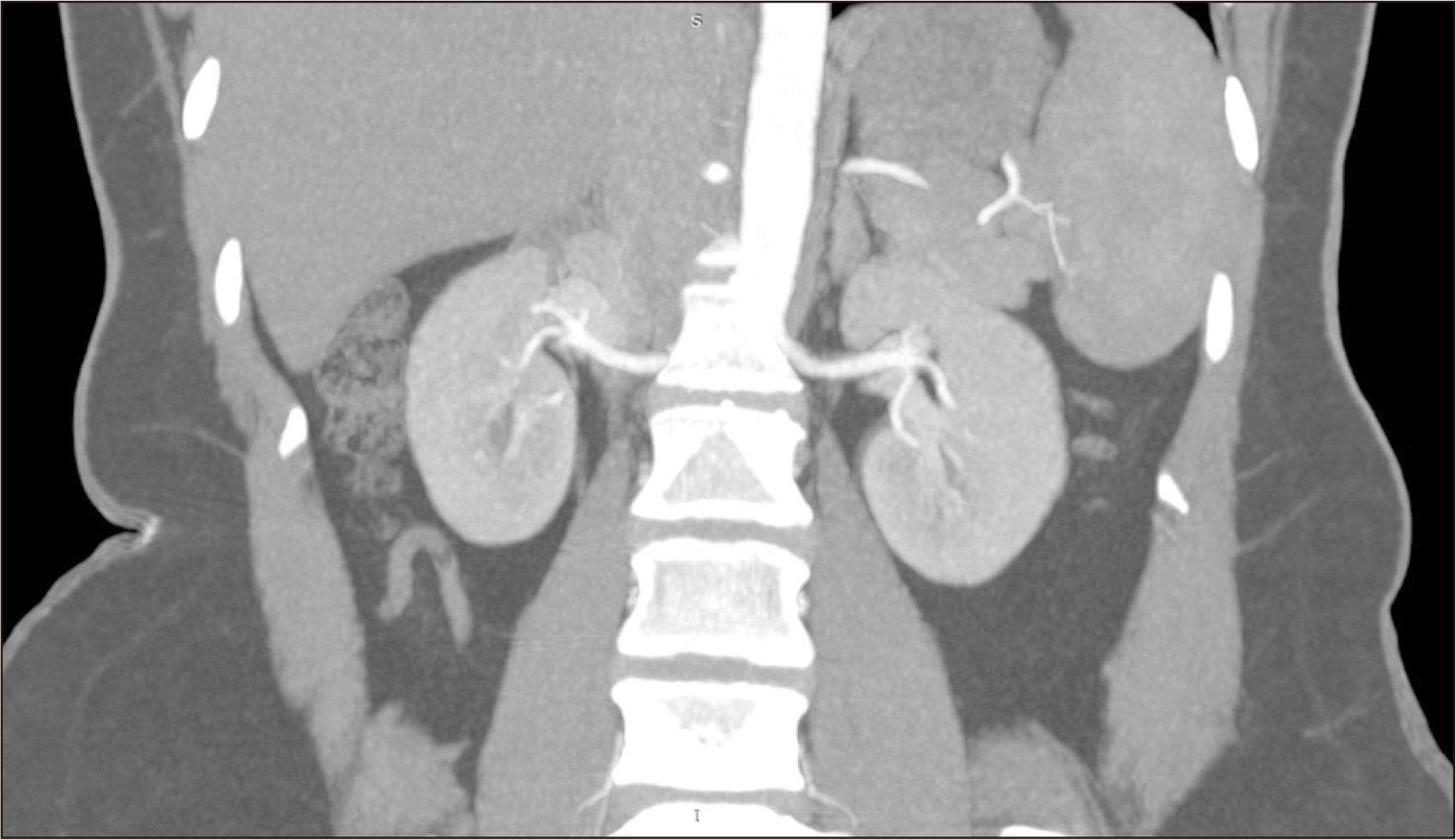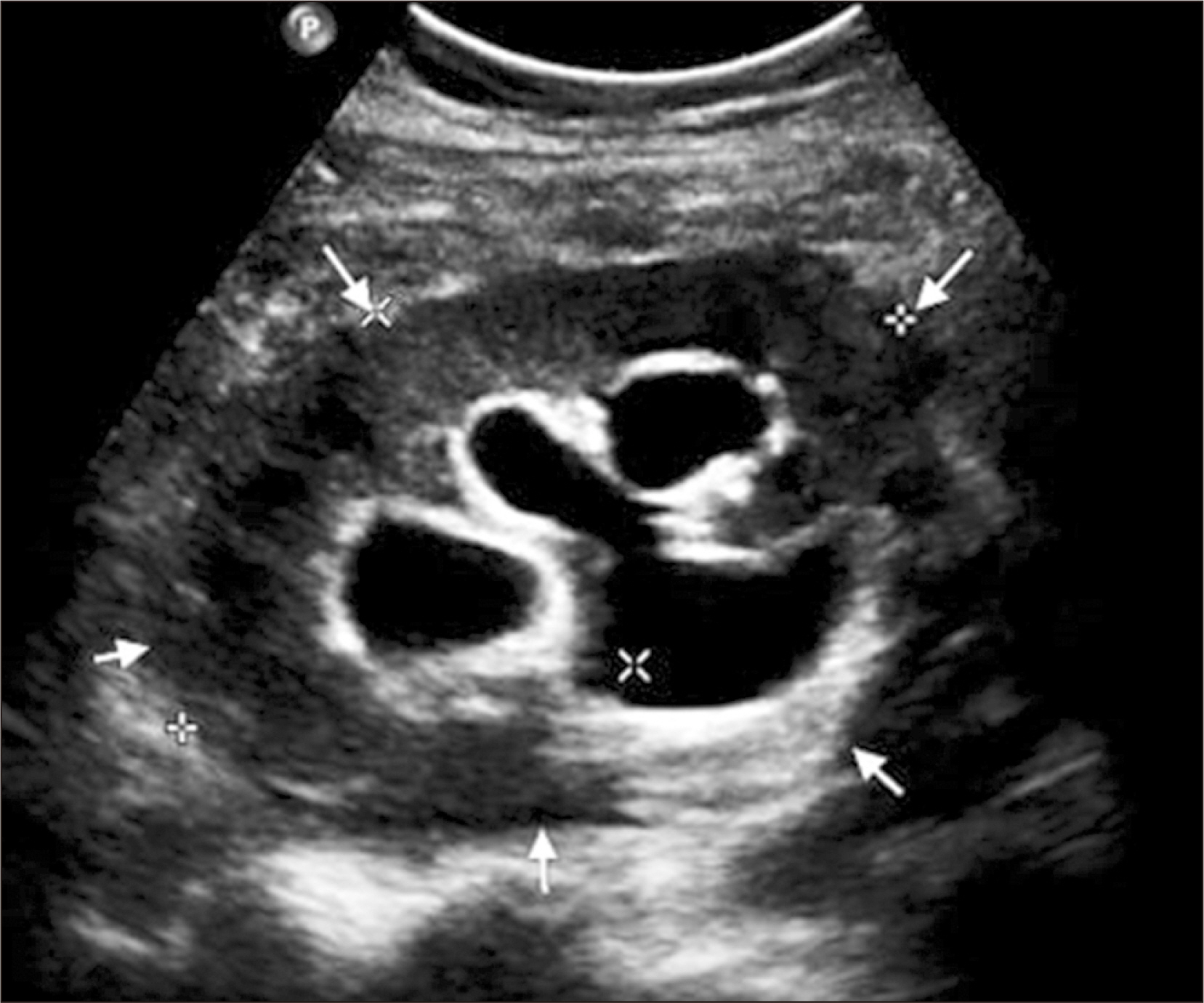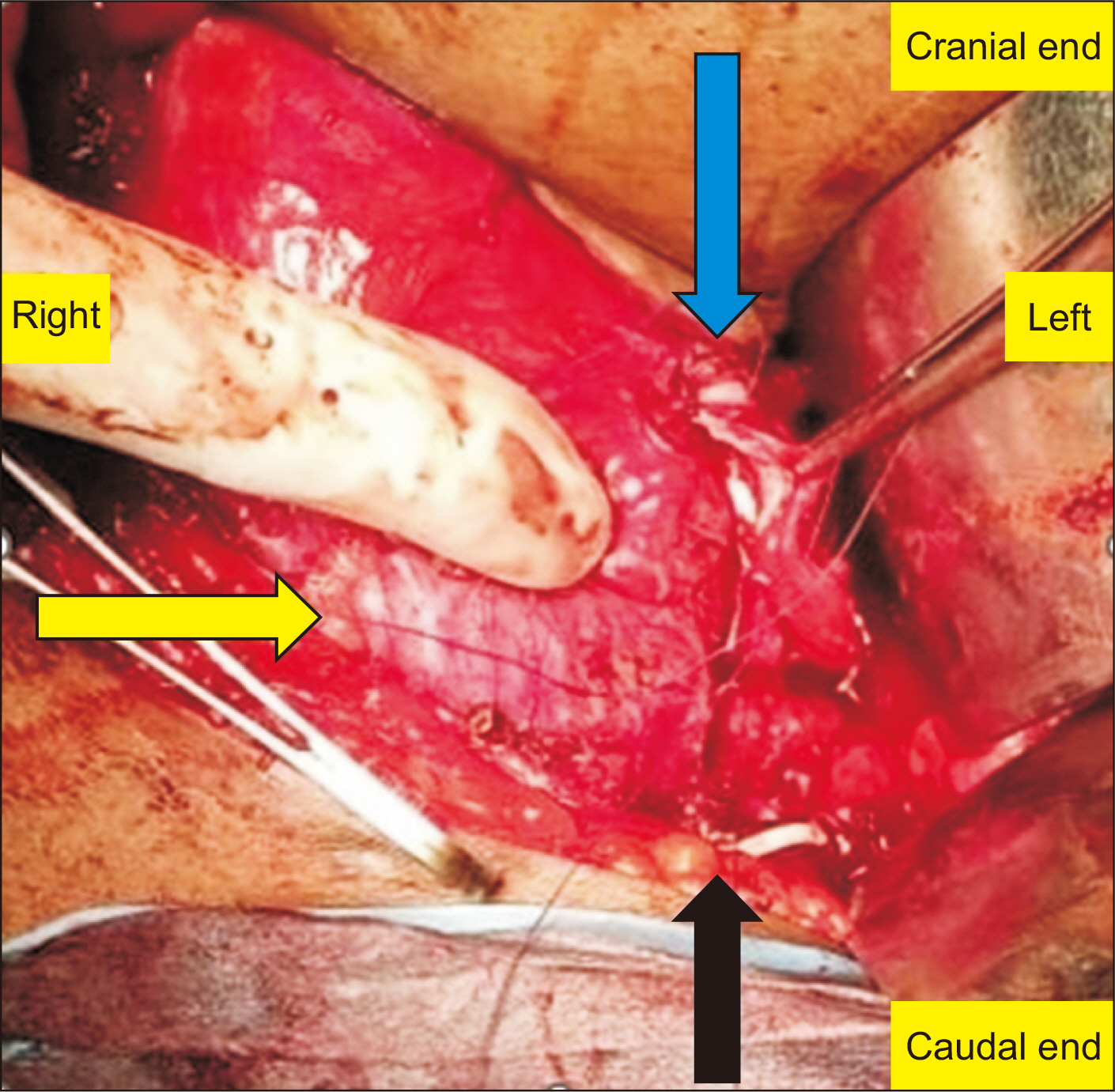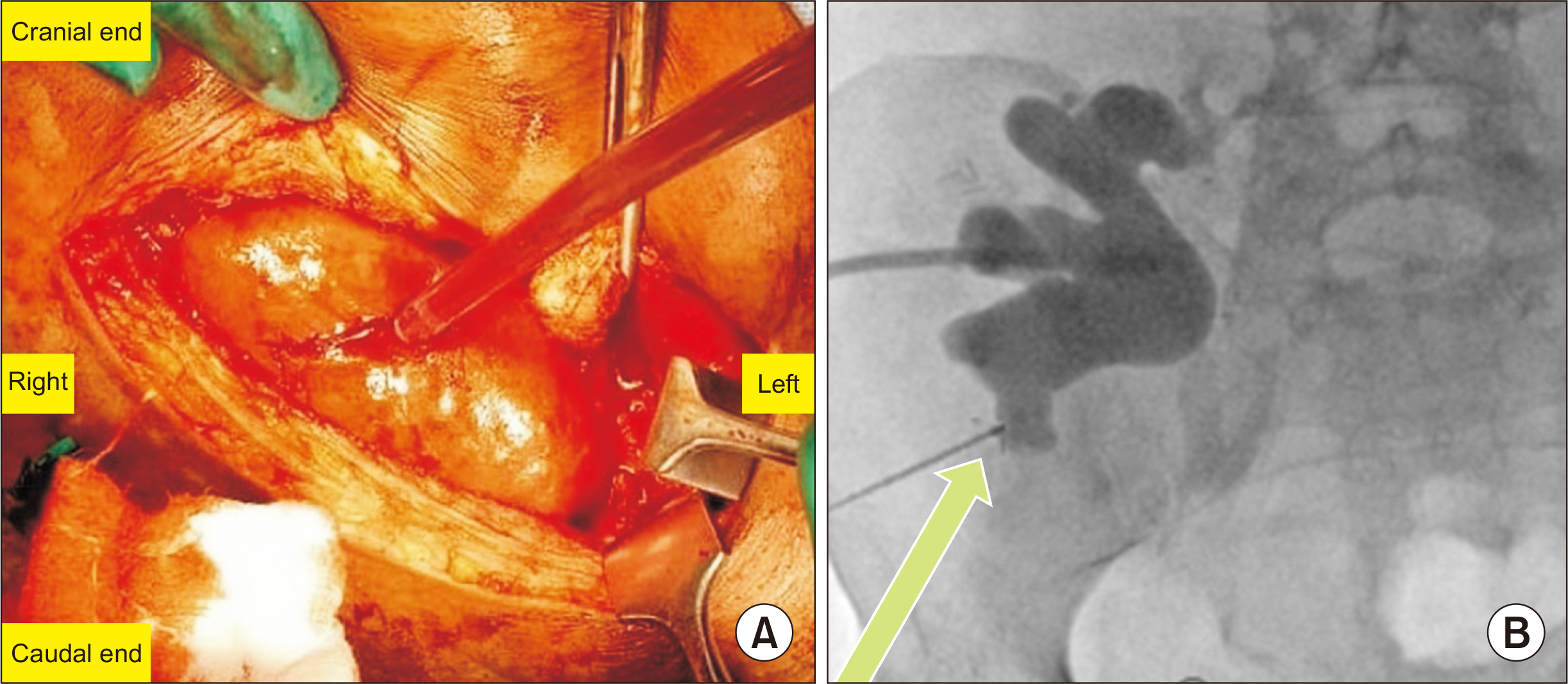Clin Transplant Res.
2024 Mar;38(1):57-62. 10.4285/kjt.23.0054.
Inferior polar nephrectomy and vesicocalicostomy for complete ureteric stricture following antibody-mediated rejection in ABO-incompatible living donor kidney transplant: a report of a rare case
- Affiliations
-
- 1Department of Urology, Command Hospital (Southern Command), Pune, India
- 2Department of Nephrology, Command Hospital (Southern Command), Pune, India
- KMID: 2555998
- DOI: http://doi.org/10.4285/kjt.23.0054
Abstract
- Renal transplant recipients are prone to urological complications, the most common of which is stricture of the transplant ureter. We present a rare case of complete ureteric stricture in a 37-year-old man who had undergone spousal living donor kidney transplantation with ABO incompatibility. Initially, treatment involved creating an anastomosis between the native right ureter and the renal pelvis of the transplanted kidney. However, the stricture recurred. Subsequently, the patient was successfully treated with inferior polar nephrectomy and vesicocalicostomy, which entailed anastomosing the lower calyx of the transplanted kidney to the bladder. After 7 months of follow-up, the patient continued to exhibit stable renal function without stricture recurrence.
Keyword
Figure
Reference
-
1. Krajewski W, Dembowski J, Kołodziej A, Małkiewicz B, Tupikowski K, Matuszewski M, et al. 2016; Urological complications after renal transplantation: a single centre experience. Cent European J Urol. 69:306–11.2. Zavos G, Pappas P, Karatzas T, Karidis NP, Bokos J, Stravodimos K, et al. 2008; Urological complications: analysis and management of 1525 consecutive renal transplantations. Transplant Proc. 40:1386–90. DOI: 10.1016/j.transproceed.2008.03.103. PMID: 18589113.
Article3. Lempinen M, Stenman J, Kyllönen L, Salmela K. 2015; Surgical complications following 1670 consecutive adult renal transplantations: a single center study. Scand J Surg. 104:254–9. DOI: 10.1177/1457496914565419. PMID: 25567856.
Article4. Shahait M, Jackman SV, Averch TD. Partin AW, Dmochowski RR, Kavoussi LR, Peters CA, Wein AJ, editors. Urological complications of renal transplantation. Campbell Walsh Wein urology. 12th ed. Elsevier;2020. p. 1936–41.5. Kroczak T, Koulack J, McGregor T. 2015; Management of complicated ureteric strictures after renal transplantation: case series of pyelovesicostomy with Boari flap. Transplant Proc. 47:1850–3. DOI: 10.1016/j.transproceed.2015.02.020. PMID: 26293062.
Article6. Ehrlich RM, Whitmore K, Fine RN. 1983; Calycovesicostomy for total ureteral obstruction after renal transplantation. J Urol. 129:818–9. DOI: 10.1016/S0022-5347(17)52380-0. PMID: 6341626.
Article7. van Son WJ, Hooykaas JA, Slooff MJ, Tegzess AM. 1986; Vesicocalicostomy as ultimate solution for recurrent urological complications after cadaveric renal transplantation in a patient with poor bladder function. J Urol. 136:889–91. DOI: 10.1016/S0022-5347(17)45117-2. PMID: 3531554.
Article8. Higgins MM, Walker JP, Daily MF, Gupta S. 2017; Open Vesicocalicostomy for the management of transplant ureteral stricture. Urol Case Rep. 13:74–6. DOI: 10.1016/j.eucr.2017.03.028. PMID: 28507909. PMCID: PMC5429138.
Article9. Astolfi RH, Patavino GA, Rosso CF, Silva Junior HT, Pestana JO, Meller AE, et al. 2018; Ureterocalicostomy with lower pole nephrectomy in a renal transplant: a case report. Am J Transplant. 18:2347–51. DOI: 10.1111/ajt.14938. PMID: 29767455.
Article
- Full Text Links
- Actions
-
Cited
- CITED
-
- Close
- Share
- Similar articles
-
- Overcoming high pre-transplant isoagglutinin titers using high-dose intravenous immunoglobulin, salvage plasmapheresis, and booster rituximab without splenectomy in ABO-incompatible living donor liver transplantation: a case report
- Successful treatment of early acute antibody-mediated rejection in an human leukocyte antigen-incompatible and ABO-incompatible living-donor kidney transplant patient
- Comparison of clinical and pathological features of rejection in ABO-incompatible and ABO-compatible kidney transplantation
- ABO-incompatible living donor liver transplantation with a simplified desensitization and immunosuppression protocol: a single center retrospective study
- Successful Pediatric ABO-Incompatible Kidney Transplantation without Pretransplant Plasmapheresis: Report of a Case






